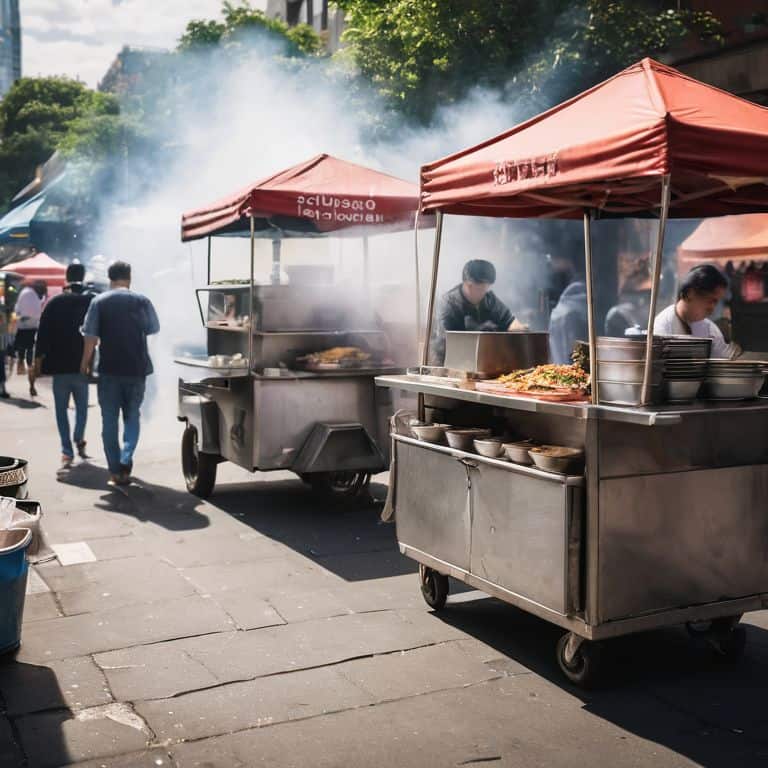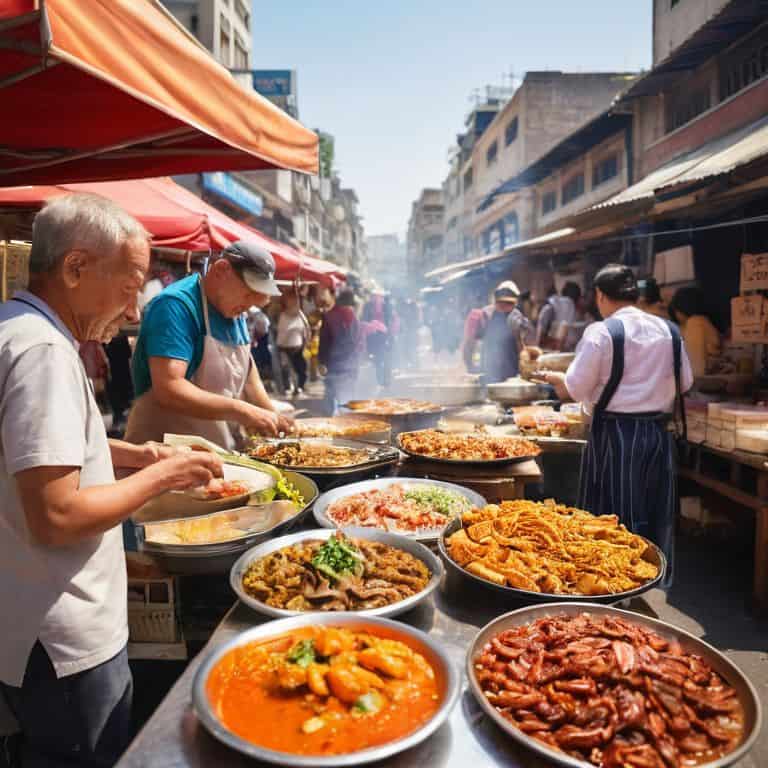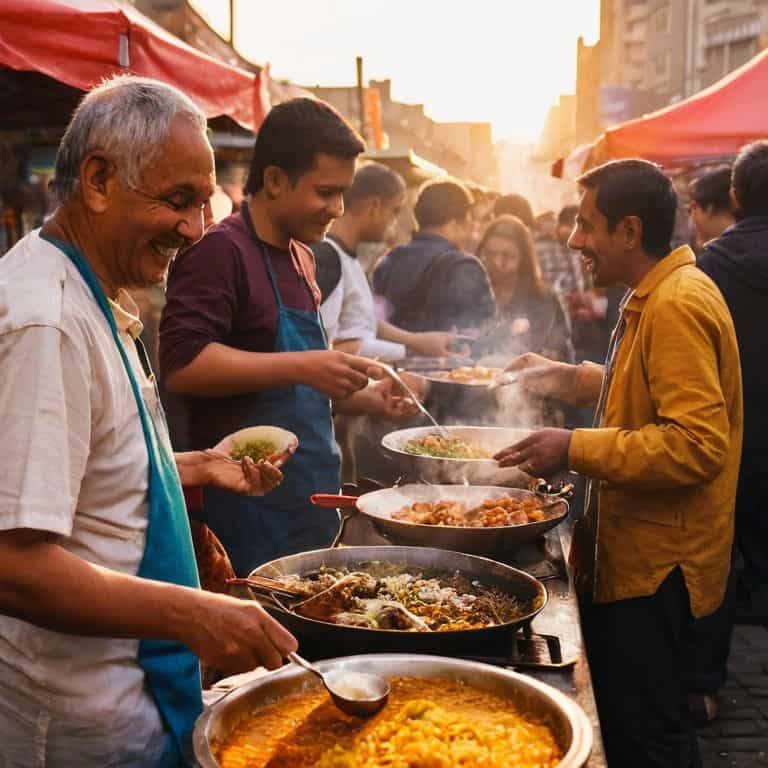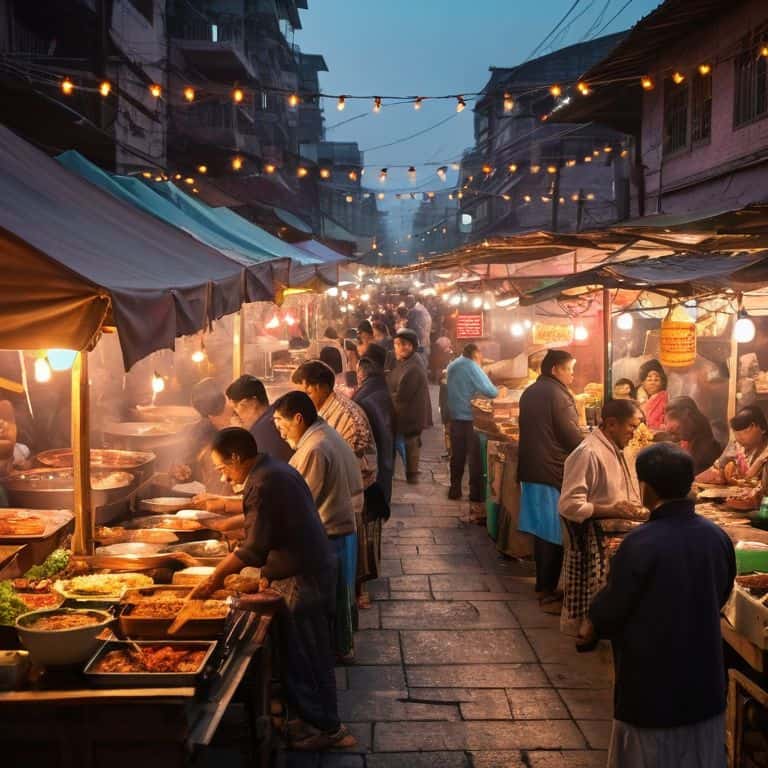I still remember the first time I fell in love with street food – it was in a small alleyway in Bangkok, where the smell of sizzling noodles and fresh herbs filled the air. But, as a traveler, I’ve also had my fair share of food poisoning nightmares. That’s why I’m excited to share with you a guide to street food safety, because, let’s be real, eating street food can be a wild ride, but with a few insider tips, you can ditch the bland hotel buffets and dive into the real flavors of the city.
As someone who’s spent years navigating the culinary scenes of different cultures, I’ve learned that it’s all about being informed, not afraid. In this article, I’ll share my honest, no-hype advice on how to enjoy street food without risking your health. You’ll learn how to identify reliable vendors, how to eat smart in unfamiliar environments, and how to avoid common pitfalls that can ruin your culinary adventures. My goal is to empower you with the knowledge to make informed choices, so you can focus on what really matters – savoring the flavors and connecting with the people behind the food.
Table of Contents
- Guide Overview: What You'll Need
- Step-by-Step Instructions
- A Guide to Street Food Safety
- Savoring the Streets: 5 Essential Tips for a Safe and Scrumptious Street Food Adventure
- Embracing the Flavors with Caution: 3 Key Takeaways
- Street Food Wisdom
- Savoring the Flavors, Safely
- Frequently Asked Questions
Guide Overview: What You'll Need

Total Time: 30 minutes to 1 hour
Estimated Cost: $0 – $10
Difficulty Level: Easy
Tools Required
- Refrigerator Thermometer (to ensure proper food storage temperature)
- Water Quality Testing Kit (optional)
Supplies & Materials
- Food Storage Containers (to keep food fresh and protected)
- Hand Sanitizer (with at least 60 percent alcohol content)
- Water Bottles (for staying hydrated)
Step-by-Step Instructions
- 1. First, do this: before diving into the vibrant world of street food, take a moment to research your destination. Look for blogs, forums, and social media groups where locals and fellow travelers share their experiences and recommendations. This will give you a sense of which stalls and markets are must-visits, and which ones to avoid.
- 2. Next, trust your instincts when it comes to choosing a street food vendor. If a stall looks dirty, or the food appears to have been sitting out for too long, it’s best to keep moving. Instead, opt for vendors with a high turnover of customers, as this usually indicates that the food is fresh and in high demand.
- 3. Now, let’s talk about food handling and preparation. When ordering, take a glance at how the vendor is handling the food. Are they using clean utensils and plates? Are they cooking the food to the right temperature? These may seem like small details, but they can make a big difference in minimizing your risk of getting sick.
- 4. When it comes to eating from street carts, it’s all about being mindful of your surroundings. Avoid eating from carts that are parked in heavily polluted areas, or near open sewers. Also, be wary of vendors who are not regularly cleaning and sanitizing their equipment.
- 5. Another crucial step is to stay hydrated. Drinking plenty of bottled or filtered water will help to flush out any potential toxins, and reduce your risk of getting sick. Avoid drinking tap water, or ice that may have been made from tap water, as this can be a common source of contamination.
- 6. Next up, be adventurous, but not reckless. Try new foods and flavors, but avoid eating anything that looks or smells suspicious. If you’re unsure about the ingredients or preparation methods, don’t be afraid to ask your vendor questions. And if you’re still unsure, it’s always better to err on the side of caution.
- 7. Finally, listen to your body. If you start to feel unwell after eating street food, don’t panic. Instead, stay calm, and drink plenty of water. If your symptoms persist, or worsen over time, consider seeking medical attention. And remember, it’s always better to be safe than sorry, so if you’re unsure about the safety of a particular food or vendor, it’s always best to avoid it altogether.
A Guide to Street Food Safety

As I delve into the world of street food, I’ve learned that cultural dining etiquette tips can make all the difference in having a positive experience. It’s not just about the food, but about respecting the local customs and traditions. For instance, in some countries, it’s considered rude to eat with your left hand, while in others, it’s perfectly fine. Being mindful of these nuances can help you navigate the streets like a local. Recognizing food poisoning symptoms is also crucial, as it can help you seek medical attention promptly if needed.
When it comes to choosing a street food vendor, reputation plays a significant role. I’ve found that vendors with a good reputation among locals are often a safe bet. They usually take pride in their food and preparation methods, which reduces the risk of common street food illnesses. Additionally, opting for vendors that use safe drinking water abroad can also minimize the risk of waterborne illnesses.
To further minimize risks, it’s essential to be aware of street food allergy considerations. If you have a food allergy, it’s crucial to inform the vendor beforehand and ask about potential allergens in their dishes. By taking these extra precautions and being mindful of local customs, you can enjoy the vibrant world of street food while staying safe and healthy.
Navigating Common Street Food Illnesses
As I’ve learned from my own experiences and those of fellow travelers, navigating common street food illnesses requires a combination of awareness and caution. From food poisoning to stomach bugs, the risks are real, but they shouldn’t deter you from exploring the authentic flavors of a place. I recall a particularly memorable stint in Morocco, where a questionable tagine left me, shall we say, intimately acquainted with the local restroom facilities. Yet, that didn’t stop me from continuing my culinary adventures, armed with a newfound respect for the importance of food handling and hygiene.
By taking a few simple precautions, you can minimize your risk of falling ill and maximize your enjoyment of the local cuisine. This includes choosing vendors with high turnover rates, avoiding raw or undercooked foods, and washing your hands frequently. With these insider tips, you can savor the bold flavors and aromas of street food without worrying about the potential consequences.
Recognizing Food Poisoning Symptoms Abroad
Recognizing the warning signs of food poisoning abroad can be a challenge, especially when you’re in unfamiliar territory. I recall a particularly harrowing experience in Marrakech, where a seemingly harmless tagine left me curled up in my riad, clinging to the bathroom for dear life. The symptoms can be subtle at first – a whisper of discomfort, a faint wave of nausea – but it’s crucial to listen to your body and take action quickly. If you notice any unusual signs, such as diarrhea, vomiting, or stomach cramps, seek medical attention or reach out to a trusted local contact for guidance.
Savoring the Streets: 5 Essential Tips for a Safe and Scrumptious Street Food Adventure
- Trust your senses: if a stall looks dirty, the food is poorly handled, or the smell is off, it’s best to steer clear
- Go where the locals go: popular stalls with a high turnover of food are often your safest bet, as the food is freshly prepared and handled with care
- Be mindful of your water sources: stick to bottled or filtered water, and avoid ice or unpeeled fruits and veggies to minimize the risk of waterborne illnesses
- Get familiar with the local lingo: learn basic phrases like ‘is this cooked to order?’ or ‘what’s in this dish?’ to ensure you’re getting food that’s safe and suitable for your dietary needs
- Let your stomach acclimate: start with small portions and mild flavors, and gradually work your way up to spicier or more exotic dishes to avoid overwhelming your taste buds and your digestive system
Embracing the Flavors with Caution: 3 Key Takeaways
Ditch the hotel buffets and indulge in street food, but do your research first: look for stalls with high turnover rates, proper food handling, and a clean environment to minimize the risk of foodborne illnesses
Trust your instincts and don’t be afraid to ask questions – if a dish looks or smells off, it’s better to err on the side of caution and choose something else, and don’t hesitate to ask your vendor about ingredients or cooking methods
Beyond just the food, understanding local customs and hygiene practices can be your best ally in staying safe while exploring street food – from handwashing habits to waste management, being mindful of these details can make all the difference in your culinary adventures
Street Food Wisdom
The flavors of a city are not just tasted, but lived, and the true secret to safe street food lies not in avoiding the unknown, but in embracing it with an open heart and a discerning palate.
Anika Sharma
Savoring the Flavors, Safely

As I reflect on my own journeys through the vibrant street food scenes of the world, I’m reminded that embracing local cuisine is about more than just filling your belly – it’s about immersing yourself in the culture and connecting with the people. By following the steps outlined in this guide, from researching local specialties to being mindful of your surroundings, you can minimize the risks associated with street food and maximize the rewards. Whether you’re a seasoned traveler or just starting to explore the world, one thing is certain: the flavors, aromas, and stories you encounter will stay with you long after your trip is over.
So, the next time you find yourself in a bustling market or at a street cart, I encourage you to take a deep breath, dive into the unknown, and let the authentic tastes and traditions of the place envelop you. Remember, the true essence of travel lies not in the landmarks or guidebook recommendations, but in the unscripted moments and unexpected encounters that make a journey truly unforgettable. By embracing the beauty of street food with an open heart and mind, you’ll not only savor the flavors of the world but also forge connections that will last a lifetime.
Frequently Asked Questions
What are some common mistakes tourists make when eating street food that can lead to food poisoning?
One of the biggest mistakes travelers make is being too timid to ask vendors about food handling practices or ignoring their own instincts about a stall’s cleanliness. Others include not checking the food’s temperature, eating from stalls with a high-risk menu, like raw or undercooked meat, and not washing those hands before diving in.
How can I trust the quality of the ingredients used in street food when I don't speak the local language?
When I’m in a new place, I look for vendors with a high turnover of food, and those who cook to order – it’s often a sign of freshness and care. I also try to find stalls with a loyal local following, they’re usually in the know about the best spots. And, I’ve learned to observe, not just ask, to get a sense of the ingredients and handling practices.
Are there any specific street foods or dishes that are more likely to cause food poisoning, and how can I avoid them?
Honestly, some street foods are riskier than others – like raw or undercooked meats, or dishes with untreated water. I steer clear of unpeeled fruits and veggies, and opt for cooked or peeled options instead. Your best bet is to follow the locals and choose stalls with high turnover, that way you know the food is fresh.
